Super Couple Giaochino Rossini and Isabella Colbran
by Georg Predota , Interlude
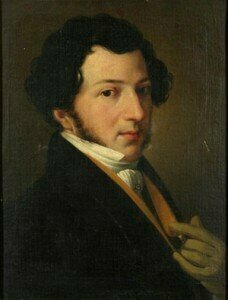
Giaochino Rossini , circa 1815

Isabella Colbran
Isabella Colbran: 6 Petits airs Italiens

Castenaso
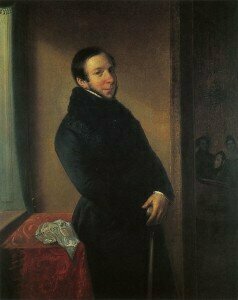
Domenico Barbaia © Wikipedia
It's all about the classical music composers and their works from the last 400 years and much more about music. Hier erfahren Sie alles über die klassischen Komponisten und ihre Meisterwerke der letzten vierhundert Jahre und vieles mehr über Klassische Musik.
Super Couple Giaochino Rossini and Isabella Colbran
by Georg Predota , Interlude

Giaochino Rossini , circa 1815

Isabella Colbran

Castenaso

Domenico Barbaia © Wikipedia
by Frances Wilson, Interlude
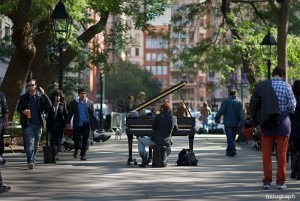
© 4.bp.blogspot.com
Alan Rusbridger’s book ‘Play It Again’ (published in 2013) shone a delightful and inspirational light on the world of amateur pianism, but people have been playing music at home and with friends for almost as long as keyboard instruments have been in existence. In the nineteenth century, when advances in design and production significantly reduced the cost of manufacturing pianos, an upright piano in the parlour was the norm for family entertainment, much as the PlayStation or smart TV is today (sadly).
Probably the single most positive aspect of being an amateur pianist is not having to make a living from playing the instrument. Recently, I have begun to play for solo performances and accompanying, which puts me in the hallowed category of “professional pianist”, but my main income comes from piano teaching, and I wouldn’t have it any different, to be honest. Not having to earn a living from playing the piano means one can truly indulge one’s passion for it. (Indeed, the word “amateur” comes from the Old French meaning “lover of” from the Latin amator.) All the amateur pianists I meet and know play the piano because they love it and care passionately about it.

© photos1.meetupstatic.com
That is not to say that professionals don’t love the piano too – of course they do, otherwise they wouldn’t do it, but a number of concert pianists whom I’ve met and interviewed have expressed frustration at the demands of the profession – producing programms to order, the travelling, the expectations of audiences, promoters, agents etc, all of which can obscure the love for the piano and its literature. Because of this, professionals are often quite envious of the freedom amateur pianists have to indulge their passion, to play whatever repertoire they choose and to play purely for pleasure.
Lucky pianists: the piano has a vast repertoire, more than enough to suit all tastes. One could spend a lifetime learning and playing only the music of, say, J.S. Bach or Frédéric Chopin and only scratch the tiniest surface of the piano repertoire. And in addition to solo works, there is music for three, four, six hands to enjoy with other pianists, not to mention being called upon to accompany other instrumentalists and singers… Really, we are spoilt rotten!
Being a pianist can be a lonely occupation/hobby and working alone on that knotty section of Liszt or Hanon exercises can at times be frustrating and demoralising. However, it needn’t be lonely: in recent years the popularity of piano meetup groups and piano clubs, or even informal get-togethers at one another’s houses, has created a wonderful community of like-minded people who meet regularly to play for one another, share repertoire and socialise.

© 1901artsclub.com
Some adult amateur pianists are shy about playing to others for fear of making mistakes and looking foolish, or because of negative experiences in childhood piano lessons. Piano meetups and clubs are a good way of overcoming these anxieties – you quickly discover that most people feel the same and playing to a friendly non-judgmental group of people is an excellent way of overcoming those performance nerves.
Adult pianists may also find it difficult to find the right teacher to support and encourage them. Some adults like to be pushed by a teacher, others need more gentle handling. Many come to lessons with a lot of “baggage” and anxieties, often a hangover from childhood music lessons, and need encouragement and support. Some have rather over-ambitious ideas about their capabilities and want to play repertoire which is just too challenging. In such instances, I recommend selecting repertoire that is well within one’s “comfort zone” to give one confidence, while gradually introducing more complex repertoire to extend and challenge one’s abilities, both technical and musical. And no repertoire should ever be considered “off limits” to the amateur pianist: the music was written to be played!
However, the music still has to be learnt and one of the greatest frustrations expressed by amateur pianists is finding the time to practise, especially if you have a busy day job and/or family commitments. We all know that “practise makes perfect”, but what is more important is that practise makes permanent and regular practise means notes are learnt, finessed and made secure. My personal mantra is “little and often” and I have become adept at sneaking practise sessions into a particularly busy day or if I am going to be away from the piano for a period of time. It’s amazing what just 10 minutes focused practising can achieve – but you need to know what needs to be done (a good teacher will offer guidance on this and give one tools to practise efficiently and effectively).
If you don’t have the benefit of regular lessons with a teacher, there are plenty of online resources in the form of blogs, YouTube tutorials, and forums, and there are also courses for adult amateur pianists where you can study with international concert pianists and acclaimed teachers or simply enjoy being amongst like-minded people. Such courses are a great way to meet other pianists and observing others being taught in the masterclass or group workshop setting can be really useful. Many of my pianist friends return to the same courses year after year and firm friendships have been forged.
Not everyone has the luxury of an acoustic piano (upright or grand) but there are some excellent digital pianos on the market now. There are also street pianos in public spaces, railway stations and airports just begging to be played, and if you crave the sleek elegance of a grand piano, there are rehearsal rooms available to hire for a modest fee. Seated at that glorious, gleaming black expanse of mahogany, you can set your imagination free and dream of playing to a full house at the Wigmore or Carnegie Hall.
By Sophia Alexandra Hall
@sophiassocialsBradley Cooper and British actress, Carey Mulligan, star in the new Netflix biopic about the legendary American conductor and composer, Leonard Bernstein.
Directed by and starring Bradley Cooper as the maestro himself, the film is set to hit Netflix in 2023. Alongside Cooper is Carey Mulligan who plays the conductor’s wife, stage and TV actor Felicia Montealegre Cohn Bernstein.
Fans of the streaming service have had an exclusive first look at Cooper and Mulligan in their biopic roles with images released on Netflix’s social media pages yesterday afternoon.
Here are the first stills of Cooper and Mulligan from the upcoming Netflix production portraying the ‘American classical music wonder boy’ and his star actress wife....
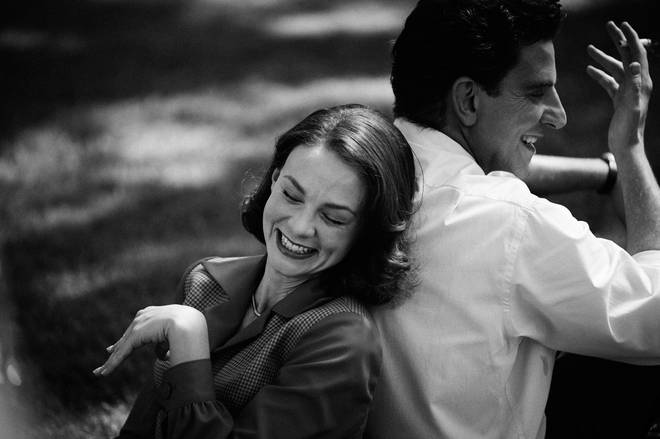
Born on 28 August 1918, Leonard Bernstein married Chilean-American TV and stage actor, Felicia Cohn Montealegre, in 1951.
Though a somewhat unsettled marriage due to Bernstein’s well-documented homosexuality, there was a strong love between the two artists, making their connection much more than a relationship of convenience, despite their individual sexual preferences.
The couple had three children together; Jamie, Alexander and Nina.
In an interview with Classic FM, Jamie Bernstein was quick to correct the description of the new netflix film saying, “It’s not a biopic, strictly speaking, it doesn’t tell the story of Leonard Bernstein from birth to death – it’s not that kind of a film at all.
“In fact, it’s a portrait of our parents’ marriage. It’s about something very specific and very personal for [my siblings and I].
“We’re really struck by the fact that this was the aspect of the story that Bradley decided to focus in on and we’re very excited about Carey Mulligan as our mother Felicia; I promise you she is going to send it to the moon in a rocket.”
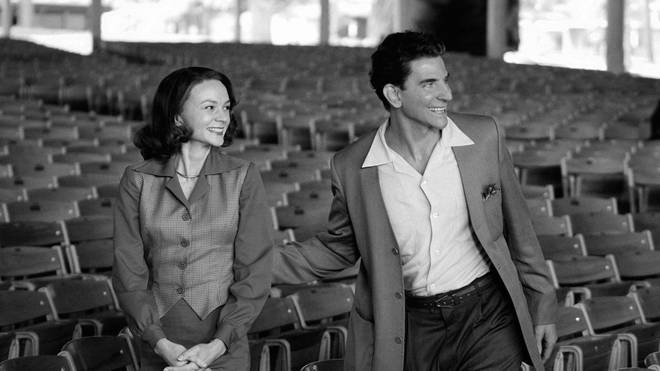
Montealegre was aware of Bernstein’s sexuality, and in a letter shortly after their marriage in 1951 she wrote, “If I seemed sad as you drove away today it was not because I felt in any way deserted but because I was left alone to face myself and this whole bloody mess which is our ‘connubial’ life.
“I’ve done a lot of thinking and have decided that it’s not such a mess after all. First: we are not committed to a life sentence – nothing is really irrevocable, not even marriage (though I used to think so). Second: you are a homosexual and may never change – you don’t admit to the possibility of a double life, but if your peace of mind, your health, your whole nervous system depends on a certain sexual pattern what can you do? Third: I am willing to accept you as you are, without being a martyr or sacrificing myself on the L.B. altar. (I happen to love you very much—this may be a disease and if it is what better cure?) Let’s try and see what happens if you are free to do as you like, but without guilt and confession, please!
“The feelings you have for me will be clearer and easier to express—our marriage is not based on passion but on tenderness and mutual respect.”

The film follows Bernstein across multiple decades, and fans are already excited to see Cooper’s visual similarity in the photographs of the actor’s portrayal of the conductor at an older age.
“If this is Bradley Cooper, the makeup artist should get an Oscar,” one Facebook commenter noted.
Another said, “It’s more than the makeup, it’s the posture, the gesture, the way he holds his cigarette.”
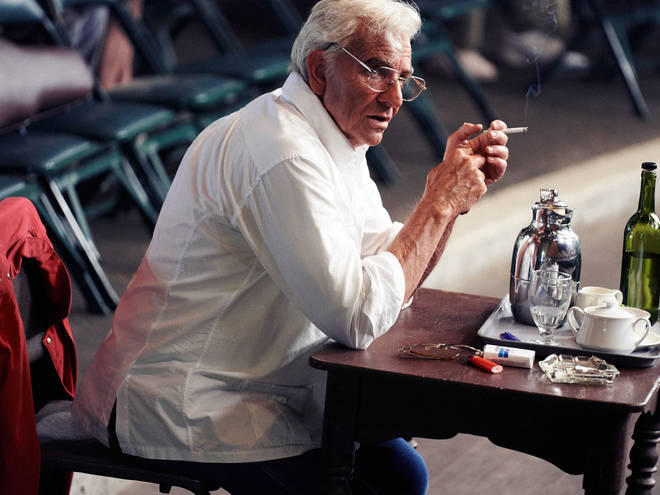
We’re just as excited as the Facebook comments section to see what Cooper will bring to this role of the beloved American artist.
With a due date yet to be announced, but the film expected next year, we’re sure that something’s coming... something good.

By Sophia Alexandra Hall
@sophiassocialsAlberto Cartuccia Cingolani, a five-year-old Italian pianist, has gone viral for his prodigious performance of Mozart at a music competition in Italy, earlier this month.
Having only started learning the instrument in 2020, the five-year-old is already a multi-award winning musician. Cingolani has taken part in seven competitions so far in his early, but unquestionably promising, career, and placed first in each of them.
Two weeks ago, Cingolani entered his eighth competition; the 10th International Musical Competition in the Italian town of Penne.
The young star opened the competition with a captivating performance of the first movement of Mozart’s Piano Sonata No. 16 in C major impressing the in-person audience, and online viewers alike. Watch his mesmerising musical delivery below.
Like Mozart, Cingolani is from a musical family; both of his parents are music conservatoire graduates, but his mother has been quick to clear up any rumours about pushing their son into classical music.
Alessia Cingolani told the regional Italian newspaper, Corriere Adriatico, that, “He started playing during the months of the first lockdown. I was always at home, so we started playing with a small keyboard, in order to do something stimulating. From there I realised that Alberto was well suited. [Doing this, my] husband and I noticed that he had perfect pitch.
“For a year and a half now, [Alberto] has been doing remarkable things, both for his age and for the time it took him to learn.
“Even though he still doesn't know how to read [music] notes well, indeed almost not at all, he takes his position on the keyboard and repeats the pieces. He is very instinctive.” [translated from Italian]
The video of Cingolani’s competition performance has been viewed by millions of people across Twitter, Facebook, and YouTube.
But the five-year-old isn’t a stranger to being on the end of a phone camera. His father, Simone Cartuccia, often records pieces played by his son, and uploads them to his YouTube channel.
As the young musician performs, it’s clear he is engrossed in the music, and with this along with his technical pianistic skills, we’re sure he’s bound to go far in his musical journey.
Joaquín Rodrigo and Victoria Kamhi Arditti

Joaquín Rodrigo and Victoria Kamhi Arditti
On 14 March 1928 a concert honoring Manuel de Falla’s admittance to the French Légion d’Honneur took place in Paris. Falla insisted that music by some of his young Spanish colleagues should be heard as well, and Joaquin Rodrigo stole the show. A reviewer reports, “At that concert we admired both the spectacular piano performance of Joaquín Rodrigo (who lost his sight due to a grave childhood disease) and the dazzling way in which he composes for the piano.” Rodrigo’s compositions quickly attracted the attention of a number of eminent Spanish pianists, among them José Iturbi, Joaquín Nín and Ricardo Viñes. As it happened, Viñes was teaching Spanish piano repertoire to an exceptionally talented pianist from Istanbul. Victoria Kamhi Arditti was the daughter of Sephardic Jewish parents belonging to the cultural and economic elite of the Turkish high bourgeoisie, and she had started her piano studies at the age of four. Since her mother was Viennese, Victoria first furthered her studies in Vienna before moving on to Paris. She personally met Joaquín Rodrigo in 1929, and fell in love with his music. “First with his music and later with him.”
 Joaquin Rodrigo: Cantico de la esposa (Song of the Bride)
Joaquin Rodrigo: Cantico de la esposa (Song of the Bride)
Love is one thing, but the economic realities of a young composer with a severe disability struggling to make his way in the world seemed insurmountable. The relationship faced stern objections from parents, friends, and colleagues, and was characterized by periods of deep personal reflection. But in the end, love managed to clear all obstacles. Victoria writes, “on a gray November day I had taken the train to the Spanish border. In Barcelona Joaquín and his older brother, Paco, were waiting to welcome me to Spain. As we followed the highway to Valencia, I was lost in admiration of the picturesque little villages we passed through, and the exuberant vegetation. Everything seemed strange to me, the people, the customs, and the activities. I was surprised to see so much luxury, such abundance, in the house of my future parents-in-law.” They started to prepare for the wedding in the “strictest intimacy,” and the happy event took place on 19 January 1933. But the financial struggle continued. Initially they settled in Valencia, but when Rodrigo composed “Song of the Bride” in 1934, which he considered his best vocal work, it was “a very difficult time of our life when, after just one year of marriage, we had to be separated for economic reasons.”
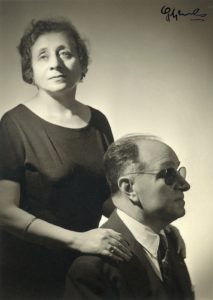 Eventually Rodrigo was awarded the “Conde de Cartagena Scholarhip” allowing him to join his wife in Paris. Victoria gave up her career as a pianist to devote all her efforts to the works of her husband, collaborating with him in musical and literary matters. When the scholarship was initially renewed, the couple decided to spend some time in Germany. However, with the outbreak of the Spanish Civil War in 1936, the scholarship fund was no longer available and they had to find refuge at the Institute for the Blind in Freiburg. Three years of extended hardship finally came to an end in 1939, and Rodrigo completed his most famous composition, the Conceirto de Aranjuez. Victoria writes that shorty after the premiere of the concerto on 9 November 1940, their daughter Cecilia was born. “And what about her eyes?” Victoria asked weakly. “They’re magnificent, blue.”
Eventually Rodrigo was awarded the “Conde de Cartagena Scholarhip” allowing him to join his wife in Paris. Victoria gave up her career as a pianist to devote all her efforts to the works of her husband, collaborating with him in musical and literary matters. When the scholarship was initially renewed, the couple decided to spend some time in Germany. However, with the outbreak of the Spanish Civil War in 1936, the scholarship fund was no longer available and they had to find refuge at the Institute for the Blind in Freiburg. Three years of extended hardship finally came to an end in 1939, and Rodrigo completed his most famous composition, the Conceirto de Aranjuez. Victoria writes that shorty after the premiere of the concerto on 9 November 1940, their daughter Cecilia was born. “And what about her eyes?” Victoria asked weakly. “They’re magnificent, blue.”
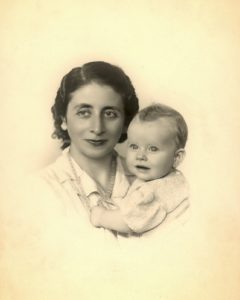
Victoria Kamhi Arditti and Cecilia
Victoria Kamhi de Rodrigo played a crucial role in her husband’s later success as a composer. She wrote the scripts for his ballets “Pavana Real” and “Juana y los Caldereros,” and adapted the texts from the Dead Sea Scrolls. Kamhi was fluent in five languages, and she authored German and French versions of her husband’s vocal music.
She also penned her memoirs in 1986 published under the title “Hand in Hand with Joaquin Rodrigo. My life at the Maestro’s side.” Kamhi helped Rodrigo to develop an individual and distinct musical style, and she was his constant companion and inspiration. She took over a wide range of musical responsibilities, including managing his career. Rodrigo tenderly wrote, “My wife Victoria, my faithful companion and collaborator, has been my inspiration and my drive, she has given me confidence in myself and unending love, and she has dedicated her life to me and has been the light of my eyes.” Kamhi died in 1997, two years before her husband; they are both buried in Aranjuez.
“The only love affair I have ever had was with music.”
Maurice Ravel
The history of classical music, however, is full of fabulously gifted individuals with slightly more earthy ambitions. Love stories of classical composers are frequently retold within a romanticized narrative of sugarcoated fairy tales. To be sure, happily-ever-after stories do on rare occasions take place, but it is much more likely that classical romances lead to some rather unhappy endings. Johannes Brahms had an overriding fear of commitment, Claude Debussy drove his wife into an attempt at suicide, Francis Poulenc severely struggled with his sexual identity, and Percy Grainger was heavily into whips and bondage. And that’s only the beginning! The love life of classical composers will sometimes make you weep, or alternately shout out with joy or anguish. You might even cringe with embarrassment as we try to go beyond the usual headlines and niceties to discover the psychological makeup and the societal and cultural pressures driving these relationships. Classical composer’s love stories are not for the faint hearted; they are heightened reflections of humanity at its best and worst. Accompanying these stories of love and lust with the compositions they inspired, we are able to see composers and their relationships in a completely new light.
Let's start with Jacques Offenbach.

Offenbach’s family
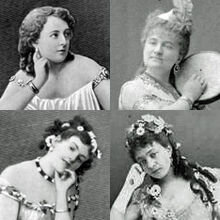
Offenbach’s leading ladies – Marie Garnier, Zulma Bouffar, Lea Silly, Rose Deschamps
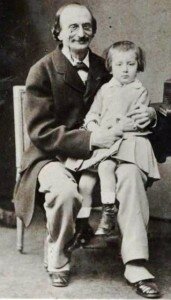
Offenbach and his son Auguste
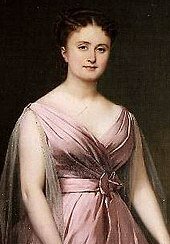
Hortense Schneider
by Maureen Buja , Interlude
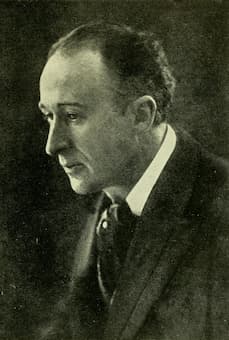
Frederick Delius (1907)
Two works written in close proximity give us two different times of day. Frederick Delius (1862-1934) was a quiet master of the tone poem. Summer Night on the River (1912) is part 2 of his Two Pieces for Small Orchestra (part 1 is On Hearing the First Cuckoo in Spring) and conveys us to a quiet night scene. The river flows by, with occasional leaves or flowers, on the sound of woodwinds. In its quietness and need for dynamic shading, it’s regarded as one of the most difficult of Delius’ scores to perform.
His tone painting is done at a whisper, with small colours appearing in the shadows to the side and just catching your ear as they disappear. It takes all the colours of the day and begins to dilute them.
The matching piece, A Song Before Sunrise, was written in 1918. From the beginning, with his marking of “Freshly” instead of a more traditional tempo marking, Delius has given us the clue to the potential of the day. The rhythm carries us forward and releases us into our new dawn.
Delius was master of the miniature tone poem. These two works, just 7 and 5 minutes long, capture in their sound times of the day that are so elusive. A summer night can be one of a perfect temperature, and when sitting by the river and watching the light so gradually fail, it can be a magical time, as captured by Delius. Before sunrise, on the other hand, is all about potential and what the day can become.
Dream a bit with Delius – his aesthetics are of the most delicate colours and feelings.
by Maureen Buja , Interlude
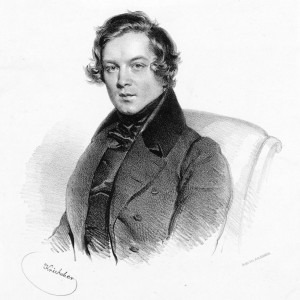
Robert Schumann, lithograph by Josef Kriehuber, 1839
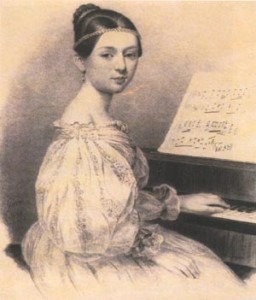
Clara Wieck at the paino